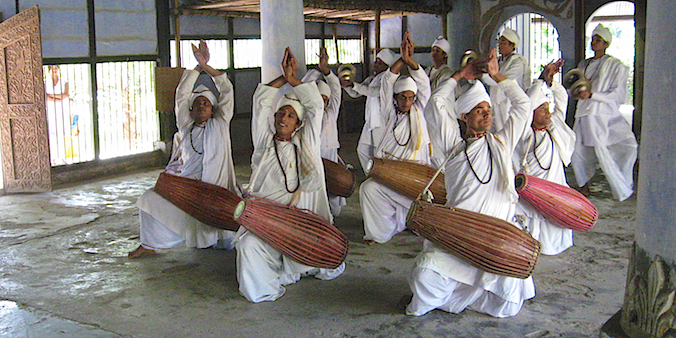Wildlife & Tribes of NE India
Tour - 21 days
Wildlife & Tribes of NE India
Tour - 21 days
About Assam and Arunachal Pradesh
Assam is the only state in north-east India that is almost entirely low lying. It consists largely of the flood plains of the Brahmaputra, one of the largest untamed rivers in the world. The climate is ideal for rice cultivation, all kinds of tropical crops, bamboo cultivation and fish farming.
Assam is relatively densely populated. The legal part of the population consists of at least 35 million people on an area of 78,000 square kilometers (similar to Czechia, a bit smaller than Austria), the illegal part at least 5 million.
Read more…Read lessThe name Assam comes from the same origin as Siam, which means Thailand. The larger part of the population finds its roots far to the east, from where their ancestors, the Ahums, entered the area in the 13th century. For more than 600 years, the Ahums upheld a kingdom in Assam. However,especially in the last two centuries, the Assamese culture, language and genetics have changed due to immigration from India, Nepal and later Bangladesh.
Before the Ahums settled in the Brahmaputra Plain, other peoples already lived here. The most important of these are the Bodos, who now live mainly in the north and northwest of Assam (population about 1.5 million).
Arunachal Pradesh is by far the most mountainous and most forested state of Northeast India. It is sandwiched between Bhutan in the west and Myanmar in the east and shares its entire northern border with Tibet/China. This border is formed by the highest glacier-covered peaks of the eastern Himalayas, a very difficult area to reach.
At lower altitudes, between 1000 and 3000m, the state is endowed with dense temperate forest and the most extensive subtropical jungle of India. Here, the majority of Arunachal’s diverse population lives, divided over many different ethnic groups.
Read more…Read less
There are at least 26 different tribes, depending on who is counting. Each of these tribes has its own language, culture, form of agriculture, religion, costumes and customs. Most of them are originally hunter-gatherers who live off what the forest yields. Donyi-Polo, the Sun-Moon god, is more popular here than Shiva, Mohammed, Jesus or Buddha. The exact origin of these tribes is largely unknown, but customs, language and looks point to East Asia and border areas of Tibet.
BUDDHIST ENCLAVESArunachal also has pockets of Buddhism. In the far east of the states, there are some villages where one could imagine being in Myanmar or Thailand, as the same Hinayana (Theravada) form of Buddhism is followed here. Mahayana (‘Tibetan’) Buddhism is followed by the Memba of Mechuka (north of Along) and is especially predominant in the northwestern corner of the state, where Arunachal borders both Tibet/China and Bhutan. Here, the Sherdukphen and Monpa live. Their language and culture are very reminiscent of their neighbors across the border. Tawang, the main town in this area, is said to have the largest ‘Tibetan’ Buddhist monastery outside Tibet.
To reach this area, involves 2.5 days of driving from Guwahati, whereby one crosses the 4170m high Sela Pass. The latter is done on the tour described here.
Region
Assam & Arunachal Pradesh
(India)
Best Time
March/April &
Nov/Dec
No. Of Days
21 days
Trip Character
Jeep tour/
wildlife tour
Sleeping Altitude
100 - 2350 m
Price
INR XXX/ $ XXX
ABOUT THIS TOUR
On this tour, you explore the two largest states of Northeast India, exploring its wildlife, birds and tribal culture. Starting at Guwahati, the capital of Assam, you travel to Nameri National Park in the foothills of the Himalayas. You’ll explore this beautiful conservation area on foot and by raft.
Then you travel higher up into the mountains. At well over 2000m, Eaglenest Wildlife Sanctuary is a gem of biodiversity, especially birdlife. You’ll spend two days exploring this beautiful place. Via Nameri you return to the plains, only to leave theme again for Ziro, at 1700m the capital of the Apatani community.
Traveling east from here through Arunachal’s ‘tribal belt’ you’ll find yourself in an archaic landscape of ndles subtropical jungle speckled with small enclaves of bamboo houses and fields. You’ll meet several of the 26 different tribes that live here, as well as the hundreds of bird species that populate the forests.
Read more…Read less
Coming down to the Brahmaputra again and crossing it to the south bank will bring you to Dibru-Saikhowa National Park, a heaven for water birds. After two nights at a historical tea bungalow in nearby Dibrugarh, we head back west and reach Kaziranga National Park. This is one of the crown jewels of Indian conservation. It is home to to the largest remaining population of Indian rhinos, the largest herd of wild buffalos and swamp deer in Asia, as well as large numbers of wild elephants, a very healthy tiger population and a dazzling birdlife. Also andscape-wise, Kaziranga will be one of the highlights of your journey, which ends after a 5-hour drive to Guwahati and a 2-hour flight to Delhi.
YOUR custom-made TRIP
The tour described here, as well as the other ones on our website, are mainly meant as suggestions. We would be happy to offer you a travel proposal that fully meets your personal demands and expectations. That means that you choose where you want to go, what level of accommodation and type of transport you want and what activities you prefer.
Please let yourself be inspired by this and other trips on our website and then drop us a line (or call us) to explain your travel wishes. We will be happy to help you put together the perfect trip. You can reach us over e-mail, Messenger, Whatsapp or mobile phone.
EXTENSIONS & VARIATIONS
Apart from the tour as described here, you could consider the following add-ons and changes:
- Spend two nights at Dirang, in order to see highland species, as well as visiting nearby Sangti Valley where black-necked cranes spend the winter.
- Spend a few days more at Mancotta Tea estate in Dibrugarh, to fully unwind and relax before (almost return home).
- Spend extra days at Kaziranga National Park, enhancing your chances of seeing the elusive tiger. Kaziranga has 6 different ranges, parts of the park that each have their own character in terms of landscape and chances of seeing different species. So you need 6 days to see them all.
ITINERARY
-
Day 1: Delhi / Kolkata ✈︎ Guwahati
After an early 2,5 hour flight you arrive in Guwahati, the capital of Assam. On arrival the local guide and driver will receive you. In the afternoon we visit the famous and colorful Kamakhya Temple, dedicated to the Hindu goddess Shakti, as well as Peacock Island, in the middle of the mighty Brahmaputra. Altitude 55m. -
Day 2: Guwahati - Nameri National Park (5 h)
On the way to Nameri N.P. we pass the plains of Assam and the tea town of Tezpur, before entering the foothills of the Himalayas. In the evening we take a nature walk on the banks of the nearby Bhorelli river. Altitude 55 → 100m. -
Day 3: Nameri N.P. - Eaglenest Wildlife Sanctuary (4 h)
Early morning we go inside the park to look for birds like merganser, Pallas’s fish eagle, lapwings, cormorants, ruddy shell duck, kingfishers and perhaps the elusive white-winged wood duck and the Great Indian Hornbill. After lunch we drive to Eagle Nest Wildlife Sanctuary in Arunachal Pradesh. Altitude 100 → 2430m. -
Day 4 & 5: In Eagle Nest Wildlife Sanctuary.
Two days will be spent in this beautiful sanctuary making short rides, walks, and birding trips around two different tented camps. Altitude 2430m. -
Day 6: Eagle Nest - Nameri (4 h).
We return to Nameri National Park. Afternoon rafting on the Borelli River, with a decent chance of seeing wild buffalos, as well as the Ibisbill and other waterbirds. Altitude 2430 → 100m. -
Day 7: Nameri - Ziro (7 -8 h).
Long drive to Ziro, in the central Part of Arunachal Pradesh. En route, we’ll visit villages inhabited by the Nishi tribe. At 1700 m, Ziro can be surprisingly cold at night. Altitude 100 → 1690m -
Day 8: In Ziro
The day will be spent visiting Apatani tribal villages. The older Apatani men tie their hair in a roll and tattoo their faces, while the women wear wooden nose plugs and face tattoos. In the evening you can visit the local market. Altitude 1690m. -
Day 9: Ziro - Daporijo (7 h)
Todays route passes through small traditional villages against the backdrop of densely wooded mountains, covered with some oft he most biodiverse forests of Asia. Tagins and Nyishi live here, both tribes generally adherents of Donyi Polo, the god of Moon and Sun. Altitude 1690 → 600m. -
Day 10: In Daporijo
The day will be spent on walks through a beautiful archaic landscape with bird-rich forests, bamboo groves, meadows and small Tagin villages, and in the afternoon a visit to a local market. Altitude 600m. -
Day 11: Daporijo - Along (6 h)
Again a beautiful day of driving through pristine forests and along bamboo villages. Along, today's destination, is a large town mainly inhabited by the Galo (or Adi Galong) Altitude 600 → 620m. -
Day 12: In Along
A short ride brings us to Kabu (also Adi Galong tribe). From here, we take an interesting walk of about 13 km to the village of Paya. Again, this area is very good for birding and we will take our time. Altitude 620m. -
Day 13: Along - Dibru Saikhowa N.P. (8 h)
Today is long drive. The narrow road winds its way down from the Arunachal hills to the floodplain of the Brahmaputra, which cross by a new bridge. Passing the city of Dibrugarh, we reach a simple but rustic ecolodge at the bank of the river at Dibru-Saikhowa N.P. Altitude 620 → 115m. -
Day 14: In Dibru-Saikhowa N.P.
Dibru-Saikowa is a safe haven for many rare and endangered species, including over 300 kinds of birds. We’ll explore the park with a big boat, on foot and floating in small canoes through the marshlands. Early evening, we check in to a very atmospheric tea bungalow in Dibrugarh. Once, this was the home of the tea estate manager, now it is a luxurious hotel. Altitude 115m. -
Day 15: In Dibrugarh
A relaxed day. You can see how tea picking works and/or take a walk on the beach of the majestic Brahmaputra. Or you can visit a small Thai Buddhist village (2 hours driving). The local monks and laymen preserve their original culture very well. Altitude 110m. -
Day 16: Dibrugarh - Majuli Island (3.5 h)
Our first stop is at the famous 16th century Ahum monuments of Sibsagar and at the largest Shiva temple of India. By ferry we cross the Brahmaputra to quiet Majuli, one of the largest river islands in the world. Overnight is in simple but rustic and clean cottages. Altitude 65m. -
Day 17: On Majuli Island
Majuli is a paradise for water birds, such as spot-billed ducks, whistling ducks, gadwalls, common teals, bronze-winged jacanas, great egrets, white-fronted goose, greylag goose, bar-headed goose and ruddy shelduck. But it is best known for its satras, monasteries where Vaishnavite Hindu monks live. We will witness a very peculiar dance by the monks. In the afternoon you can go bicycling, over small dikes and passing through small Mishing villages. Altitude 65m. -
Day 18: Majuli - Kaziranga N.P. (97 km/ 3h)
We take the ferry back again and then drive on to Kaziranga N.P., where we check in for 3 nights at an attractive resort very near the park. In the afternoon we go inside the park for our first jeep safari, accompanied by a specialized nature guide. Kaziranga is the best place to view the Indian Big Five: Indian rhino, tiger, leopard, buffalo and elephant. Altitude 95m. -
Day 19 & 20: In Kaziranga N.P.
Again you’ll do two jeep rides, each in different parts of the park. The park has seven different ranges, each with its own landscape and different chances of seeing particular species. Altitude 95m. -
Day 21: Kaziranga - Guwahati & flight Guwahati ✈︎ Delhi (5 h drive, 2 h flight)
Early morning you leave for Guwahati, the capital of Assam. Here, you take the afternoon flight back to Delhi. It depends on the timing of your international flight whether you will need an overnight stay in Delhi. In the latter case we can arrange this for you.
HIGHLIGHTS OF THIS TOUR
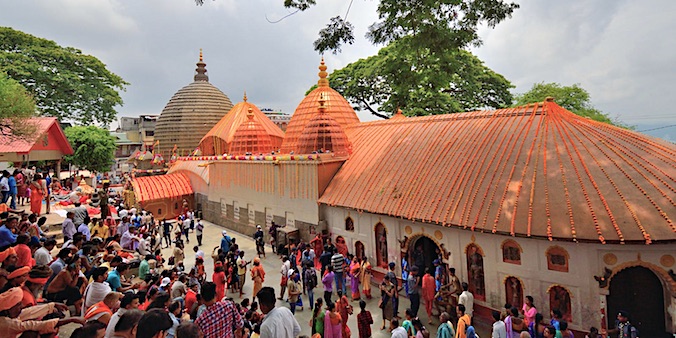
Guwahati
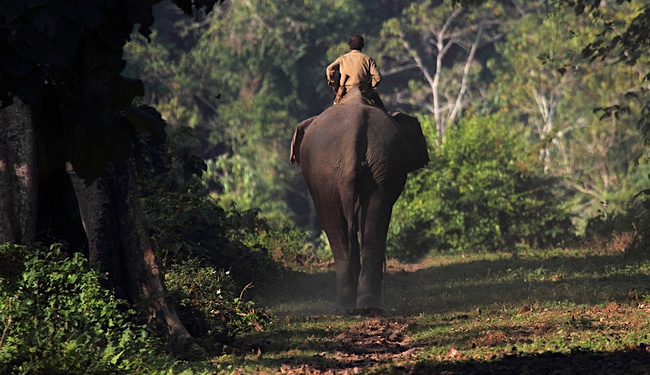
Nameri National park
Eagle Nest wildlife Sanctuary
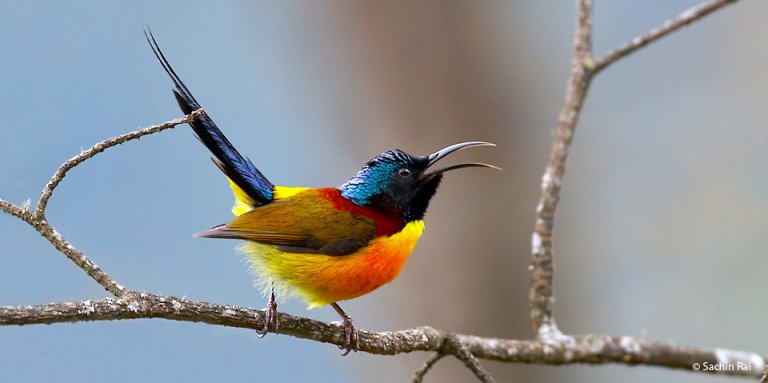
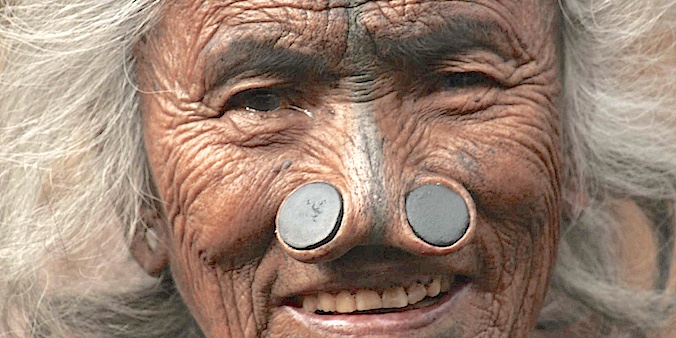
The APatani of Western Arunachal
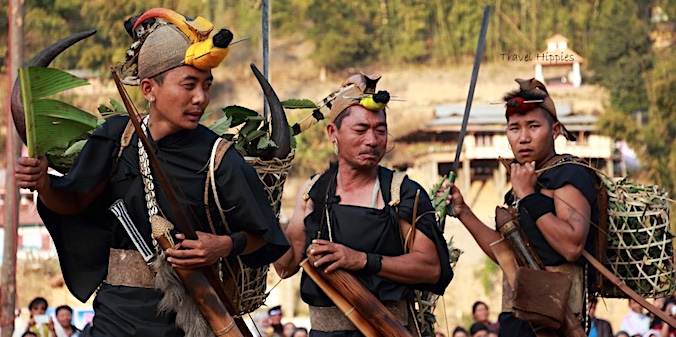
The Nyishi of Central Arunachal
The Jungle of Arunachal Pradesh
P.M.
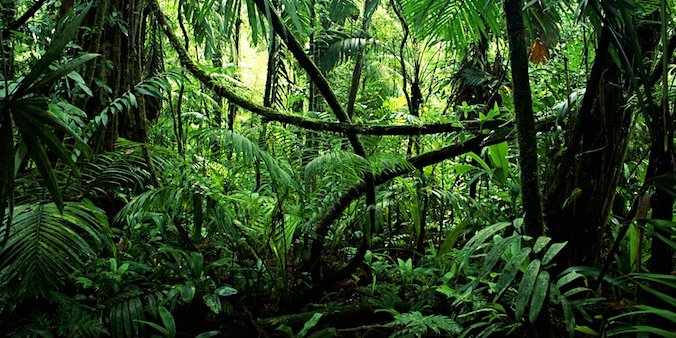
The Mithun

The Tagin of Central Arunachal
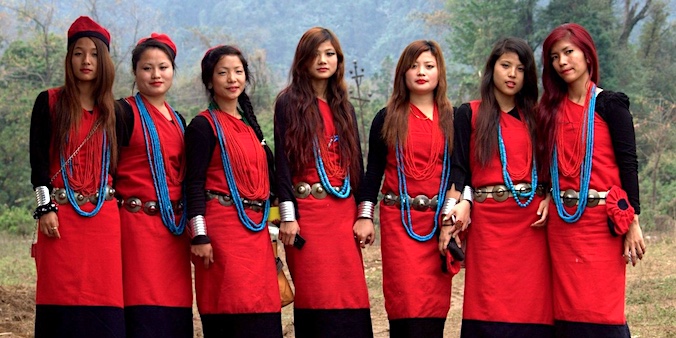
The Adis of Eastern Arunachal

The Brahmaputra
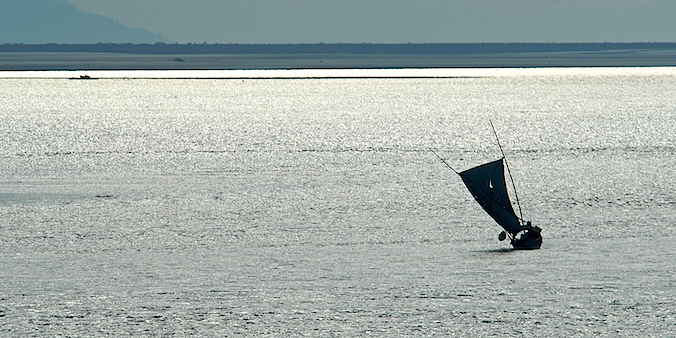
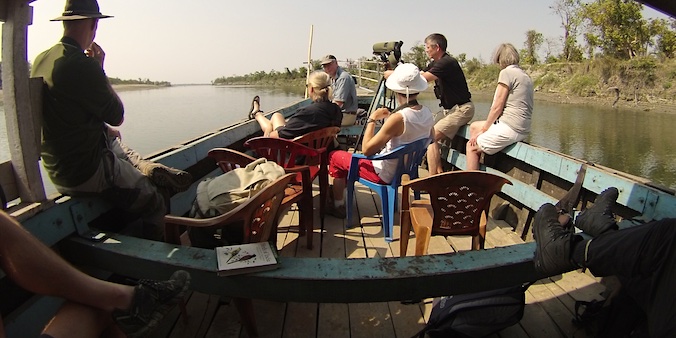
Dibru-Saikhowa National Park
Tea Gardens of Assam
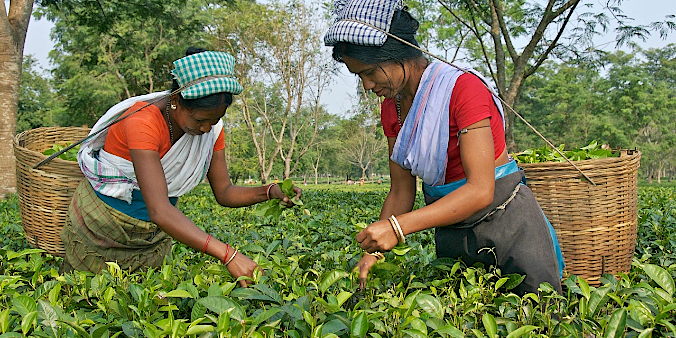
Brahmaputra CROSSING

The Mithun

